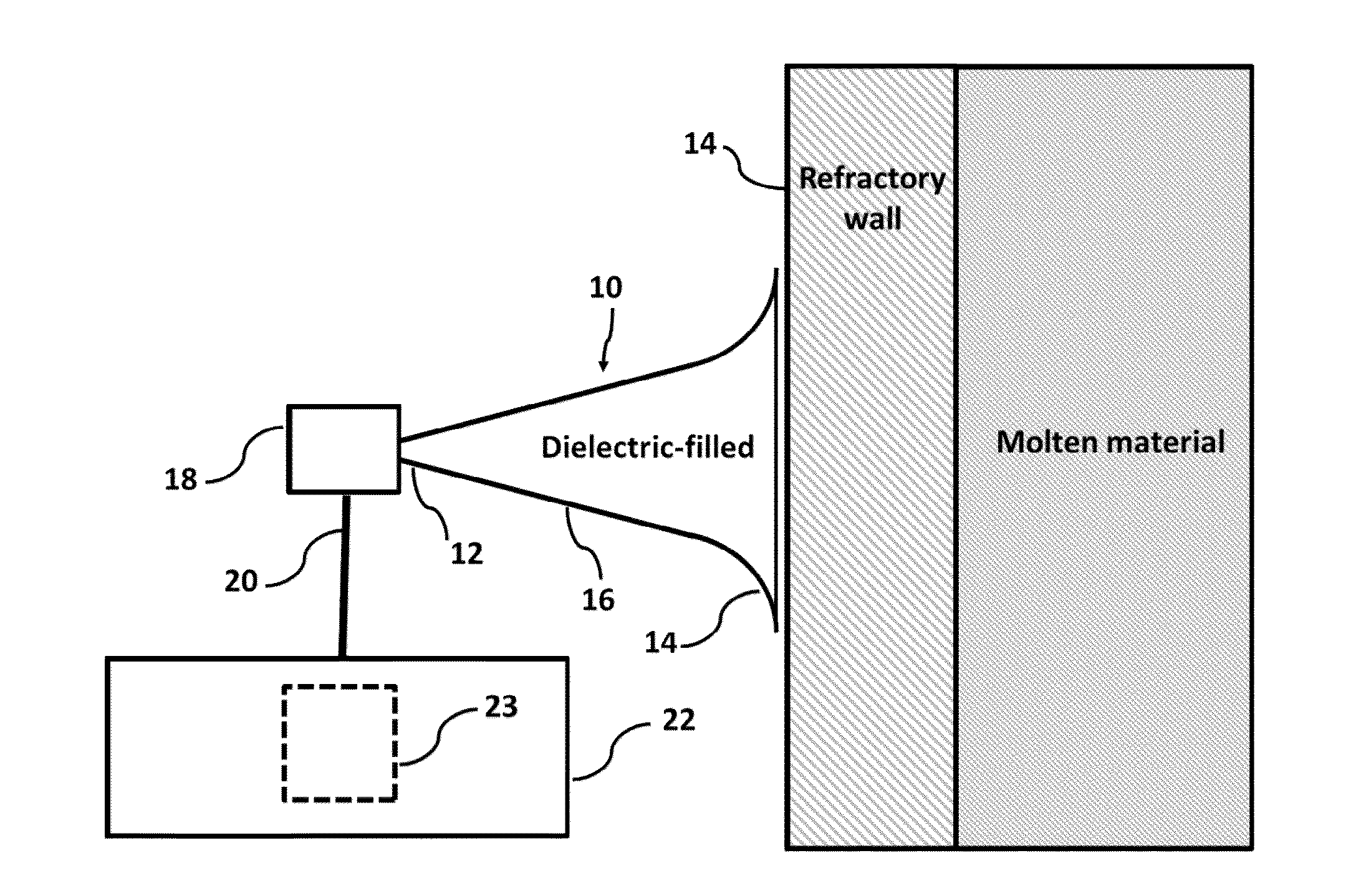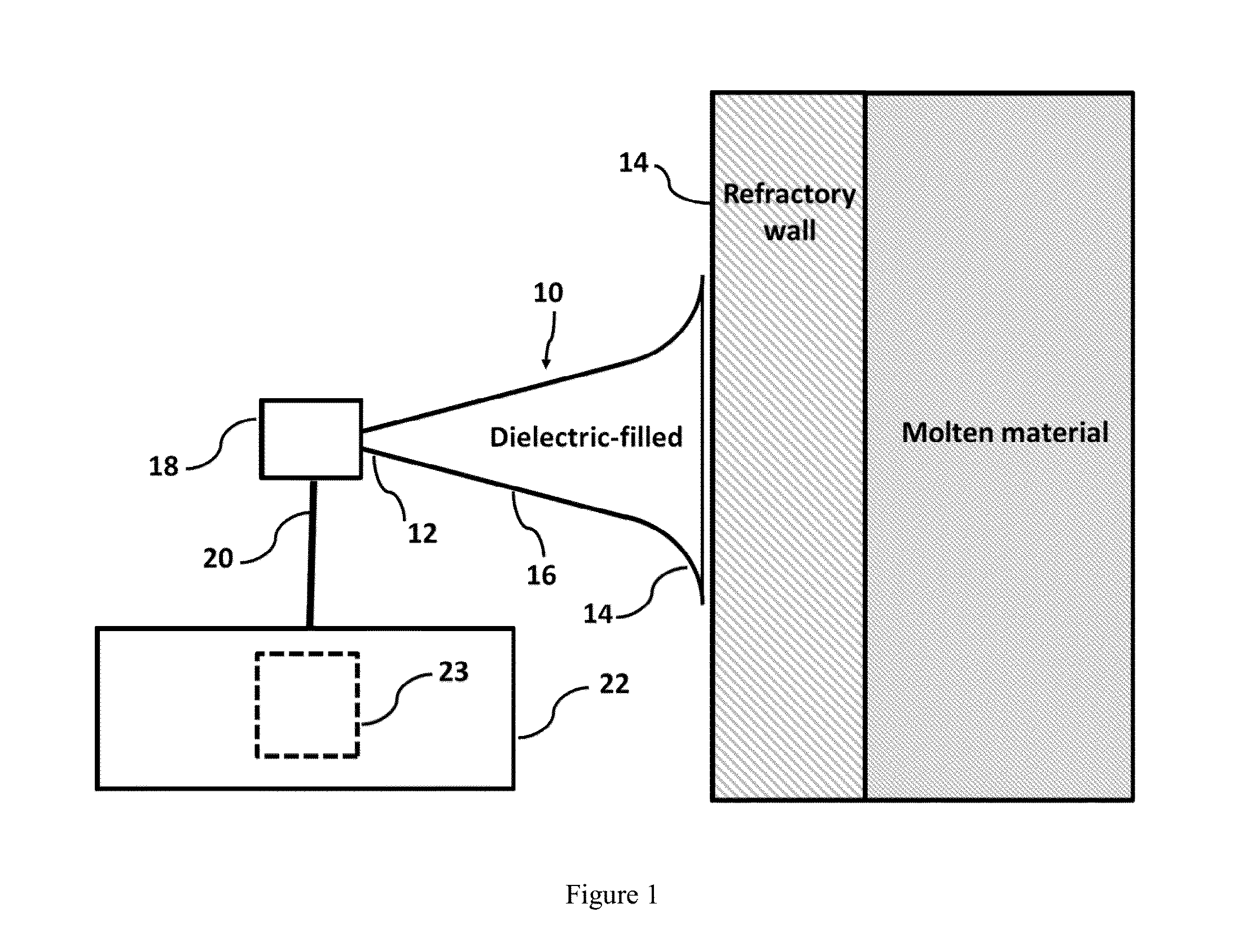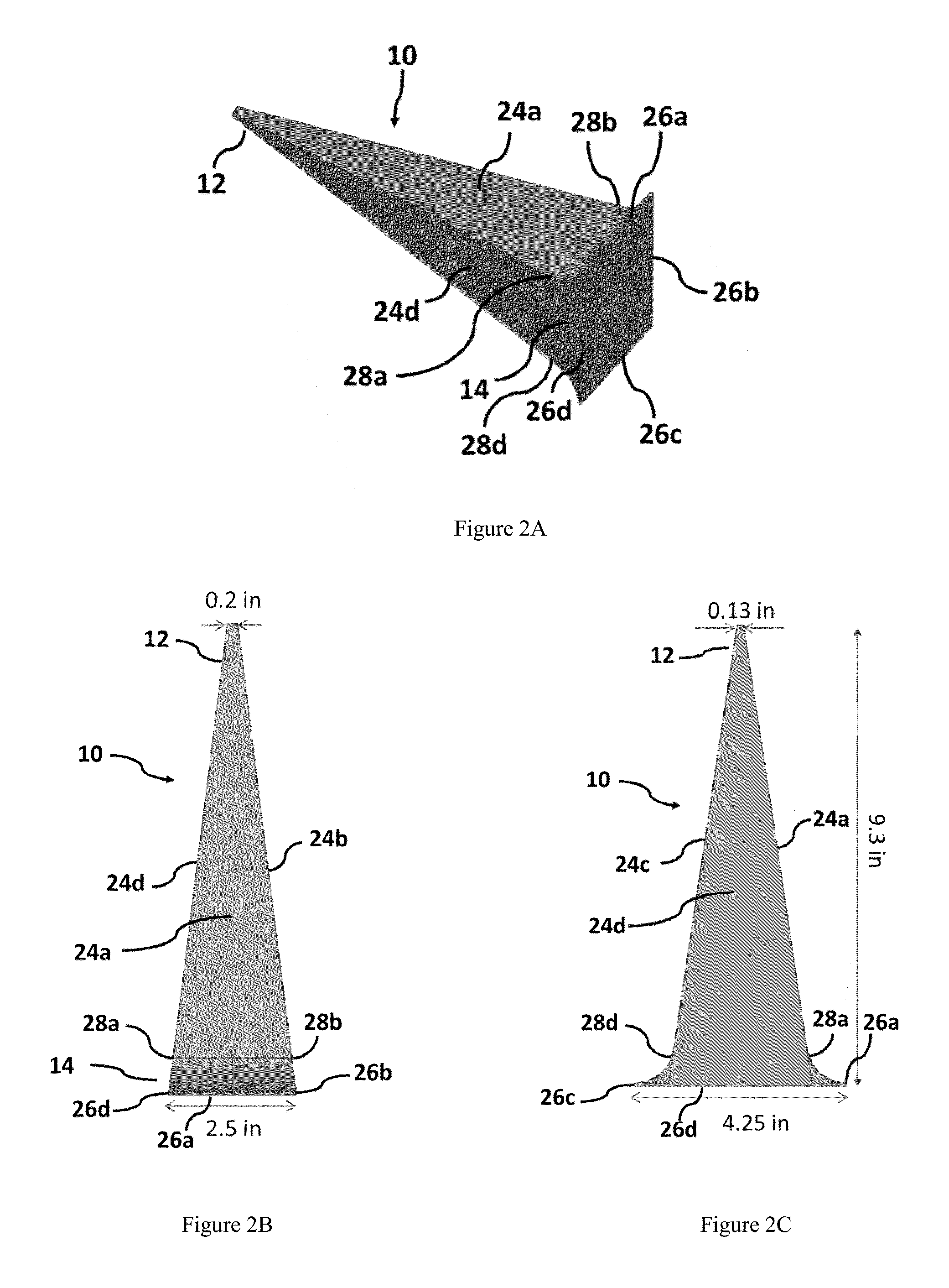Material erosion monitoring system and method
a monitoring system and material technology, applied in the field of systems and methods for evaluating the status of materials, can solve the problems of difficult to create accurate estimates of the expected lifetime of the furnace, no well-established method of deterministically measuring the thickness and and the inability to accurately measure the thickness of the erosion profile of the walls of such furnaces. to achieve the effect of reducing the level of clutter
- Summary
- Abstract
- Description
- Claims
- Application Information
AI Technical Summary
Benefits of technology
Problems solved by technology
Method used
Image
Examples
Embodiment Construction
[0023]The following description is of a particular embodiment of the invention, set out to enable one to practice an implementation of the invention, and is not intended to limit the preferred embodiment, but to serve as a particular example thereof. Those skilled in the art should appreciate that they may readily use the conception and specific embodiments disclosed as a basis for modifying or designing other methods and systems for carrying out the same purposes of the present invention. Those skilled in the art should also realize that such equivalent assemblies do not depart from the spirit and scope of the invention in its broadest form.
[0024]In accordance with certain aspects of an embodiment of the invention, a material evaluation system is shown in FIG. 1. The system is configured to evaluate a status of a refractory material used as a furnace wall. Thus, the refractory material has an outer surface and an inner surface opposite the outer surface. The inner surface of the re...
PUM
| Property | Measurement | Unit |
|---|---|---|
| frequency | aaaaa | aaaaa |
| frequency | aaaaa | aaaaa |
| frequency | aaaaa | aaaaa |
Abstract
Description
Claims
Application Information
 Login to View More
Login to View More - R&D
- Intellectual Property
- Life Sciences
- Materials
- Tech Scout
- Unparalleled Data Quality
- Higher Quality Content
- 60% Fewer Hallucinations
Browse by: Latest US Patents, China's latest patents, Technical Efficacy Thesaurus, Application Domain, Technology Topic, Popular Technical Reports.
© 2025 PatSnap. All rights reserved.Legal|Privacy policy|Modern Slavery Act Transparency Statement|Sitemap|About US| Contact US: help@patsnap.com



